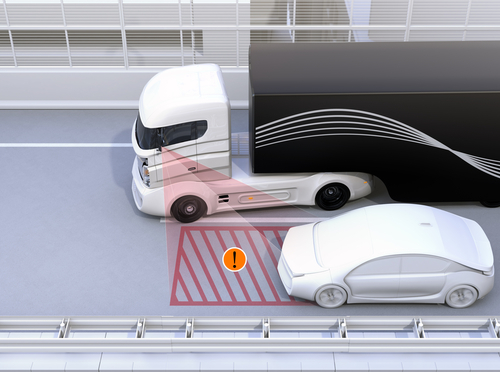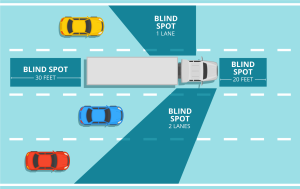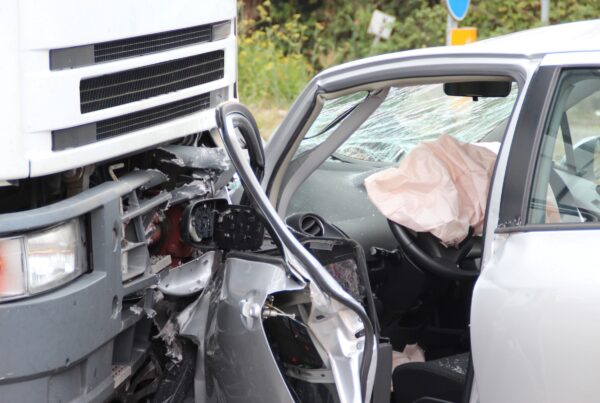Thanks to irresponsible and inattentive motorists, driving will always be inherently dangerous; however, learning about common driving practices can mitigate potential threats to your health. A vehicle’s blind spots are one of the threats drivers should know before getting behind the wheel. While acknowledging your own blind spots is helpful, it’s also important to identify other drivers’ blind spots: especially if they drive a commercial truck.
Blind Spots on Commercial Trucks Are Unfixable
Drivers can and must deal with their blind spots while on the road. When motorists look over their shoulders before making a lane change, they are ensuring a safe maneuver by actively mitigating their blind spots. Therefore, passenger vehicle blind spots can be dealt with. However, truckers do not have this luxury.
Unlike passenger vehicle motorists, tractor-trailer truck drivers and commercial trucks suffer from unfixable blind spots. Truckers cannot mitigate their blind spots by looking over their shoulders because their trailer sits directly behind their cab. Therefore, when truckers look out the back of their cab, they see the trailer rather than other drivers. This scenario causes unfixable blind spots and restricted visibility for all truckers, which means you should identify where these blind spots sit.
Blind Spots on Commercial Trucks
All of the following blind spots are identified from a “flow of traffic” perspective. This means the blind zones only apply to vehicles that are traveling in the same direction as the truck.
Where are a truck’s blind spots located?
- Along the sides of the truck near the back of the cab (if you can’t see the trucker in their side mirrors, they likely can’t see you.)
- Directly in front of the truck (the hood of the cab may block low-seated cars from view.)
- Directly behind the truck (the truck’s trailer makes it impossible to see a car directly behind the truck.)
When you encounter unique situations, such as driving alongside wide loads, it’s important to remember that the blind spots may be slightly different. A good rule to remember: if you can’t see the truck driver, they can’t see you.
What are the Dangers of Driving in a Truck’s Blind Spots?
Depending on which of the danger zones you find yourself in, there are a variety of potential accidents you and the truck driver could be at risk of encountering. Driving along the side can result in lane change accidents as a truck tries to maneuver over – and directly into your vehicle. Following too closely or cutting off a truck in the front can make collision avoidance impossible, either because you are unable to see what’s coming ahead, or because the truck was not given enough time to stop behind you. In almost any case, if there’s a collision between a passenger vehicle and tractor-trailer or commercial truck, chances are the vehicle is going to have much more substantial damage or injury than the truck, so its best to avoid a collision however possible.
How Can I Avoid a Truck’s Blind Spots While Driving?
If you find yourself in one of these positions, it’s crucial you slow down or speed up to move out of a trucker’s potential blind spot. Even the safest of drivers will find themselves in a truck’s blind spot at some point or another, particularly when actively passing on the highway. The key is to avoid these danger zones whenever possible, especially for prolonged periods. If you’re behind a truck, leave at least two car lengths between the front of your vehicle and the rear of the trailer. This will provide you with more time to react if and when necessary. When actively passing, ensure you can do so quickly so you are not just sitting in their blind spot. Plus, if on the highway, you’re not blocking others from safely passing the truck or keeping them from getting out of a blind spot, as well. When driving in front of a truck you won’t necessarily have full control over how closely the truck driver chooses to drive behind your vehicle. However, if you are getting in front of a truck after passing, do not slide over until you can see the driver in your rearview mirror.
What Should I Do If I Find Myself in a Truck’s Blind Spot?
Unfortunately, not every instance of driving in a blind spot will be easy to get out of. However, there are some things you can do to keep yourself safe. Realize you’re following too closely? Simply slow your speed to back off and create space. If you are riding alongside, either speed up to pass or slow down to get back behind the truck. Should you be following another vehicle that is essentially refusing to pass the truck, leaving you stuck, slow down to keep a safe distance until there is enough space to pass. When trucks are following too closely behind you, the only thing you can do is move out of the way if possible. On the highway, simply change lanes and allow the truck to pass you.
Fighting for Just Compensation After Truck Accident Injuries
While identifying a trucker’s blind spots is helpful in staying safe, it cannot adequately protect you from potential accidents. If you or a loved one are injured in a truck accident, we offer legal support for trucking incidents in St. Louis.
Call (314) 241-2929 now for a free consultation for your case!









